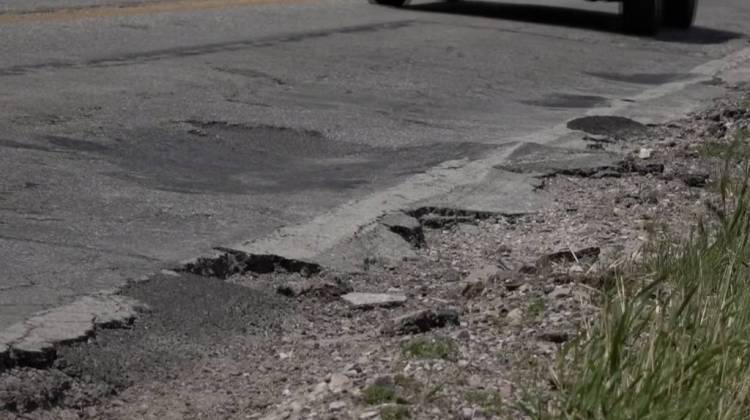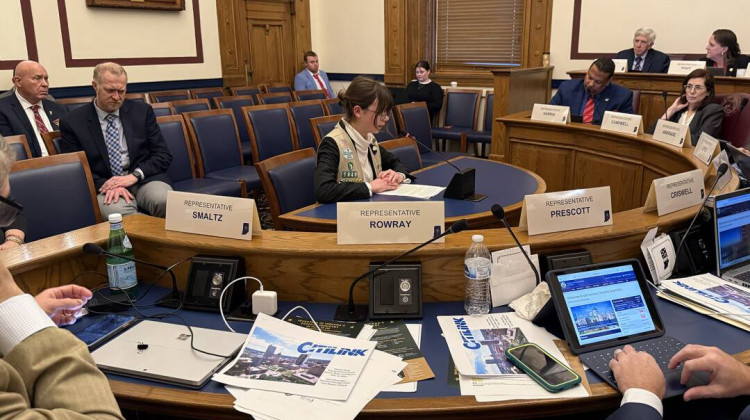Aside from the cliches that it all comes down to turnout and that the only poll that counts is the one on Election Day, one more truism that talking heads will repeat endlessly Tuesday is that demographics are destiny.
It may make you want to throw a shoe at the TV (or radio), but (as they say) cliches are cliches for a reason. Breaking the electorate into these smaller chunks tells a lot about what people like and dislike about a candidate, not to mention how a rapidly changing electorate is changing the fundamentals of U.S. presidential politics.
With that in mind, here are five demographic groups to watch as exit polls roll in on Tuesday night. These results will be most telling about specifically how Donald Trump and Hillary Clinton divided an already polarized nation.
1. The white college/non-college split
This has been one of the most fascinating splits of this election — Trump's candidacy has succeeded in highlighting that there is a deep class fissure among whites. Books like Hillbilly Elegy, White Trash and Strangers in Their Own Land further explored this divide and helped a general audience understand just how deeply riven the nation's majority racial group is.
Tuesday's exit polls could put the exclamation point on that story, showing an absolutely stunning gap between college- and non-college-educated whites. According to polling data from 1992 onward, this year's gap between whites who are college-educated and those who are not could be very wide. Here's how it looks according to recent polls, compared with that past polling data:
It's a deeper cut from the exit poll data than is usually shown in post-election analyses, but considering the fascination with these demographic groups during the 2016 election, it's worth looking out for.
2. Hispanics — both how they split and how many there are
In 2012, the Republican Party put out an "autopsy" that called for more outreach to Hispanic voters.
The GOP didn't follow that advice this year, to put it mildly. Instead, Republicans got a candidate who alienates Hispanics. Hispanics have long favored Democrats anyway, but this year that growing population could swing Democratic by the largest margin since 1976 — or even more. In the latest ABC News/Washington Post tracking poll (the only recent major national poll to break out Hispanics), the gap right now is 71 to 19 percent — Clinton leads Trump by 52 points. Mitt Romney got just 27 percent of Latinos, the lowest ever for a Republican. That result, in part, triggered the Republican National Committee's Growth and Opportunity Project (the aforementioned autopsy) and called specifically for the GOP to get behind comprehensive immigration reform. It has not.
That's a problem for Republicans, and not just for this year. The Hispanic share of the electorate has grown in every election since 1992. Back then, Hispanics accounted for just 2 percent of the electorate. In 2012, it was 10 percent. And that was below their share of the population — 18 percent and growing.
In Texas, 28 percent of the voting-age population was Hispanic as of 2014. If that population continues its fast growth — and if it remains decidedly Democratic — it could make Texas into a battleground state or even a blue state soon. That could be the end of competitive presidential elections, as conservative commentator Tucker Carlson told NPR on Monday.
3. Are split-ticket voters back?
Exit polls often show how people's presidential votes line up with their House votes. And these days, those data usually aren't terribly surprising. In 2012, 93 percent of people who voted for the Democrat in their district also voted for Obama, and 92 percent who voted for their Republican also voted for Romney.
Since 1972, the share of people voting for members of Congress and presidents of different parties has fallen off heavily.
This year could prove to be a major break in this trend. Republicans have been worrying that their divisive top-of-the-ticket candidate could hurt down-ballot Republicans. Both Trump and Clinton have very high unfavorable ratings, meaning plenty of people may be torn on their presidential votes but not their congressional votes (or they may simply choose to leave the presidential category blank).
This number will provide some insight into which way people sway on this question.
4. The gender divide could be much wider than usual
These days, women reliably vote more Democratic than men do. The gender gap could be bigger this year than it's been in more than 60 years, as we reported last week.
Of course, there are many different subsets of women with their own particular voting characteristics — single women tend to be more Democratic than married women, for example, and white women tend to be far more Republican than other women.
However, the data do show that, broadly speaking, gender is a major dividing line in American politics. These sorts of splits often show up in smaller demographic groups as well. For example, within the groups of college/non-college whites, there's a clear gender split. Those men are far more Republican than their female counterparts, and while both groups have moved more Republican over the past couple of decades, men have moved more.
5. Despite all the hand-wringing, white evangelicals seem to be sticking with the GOP
White evangelicals are about as reliably Republican as a demographic gets these days, having shifted further and further right over the past couple of decades. However, this year, major cracks still haven't started to show in this solid wall of Republican support.
Major evangelical leaders like the Southern Baptist Convention's Russell Moore have spoken out against Trump. Furthermore, women in this group have found themselves unable to support Trump, particularly since the release of an Access Hollywood tape that featured him talking about grabbing women's genitals.
So could this be the year evangelicals back away from the Republican Party ever so slightly? Around three-quarters of white evangelicals have voted Republican since the 2004 presidential election, and recent polls indicate little drop-off thus far. Given all of that reluctance among white evangelicals, the real story among this group on Tuesday night might be if they don't sway much.
9(MDEwMDc1MzM3MDEzNDczOTA0MDc1MzViMQ001))
 DONATE
DONATE











 Support WFYI. We can't do it without you.
Support WFYI. We can't do it without you.